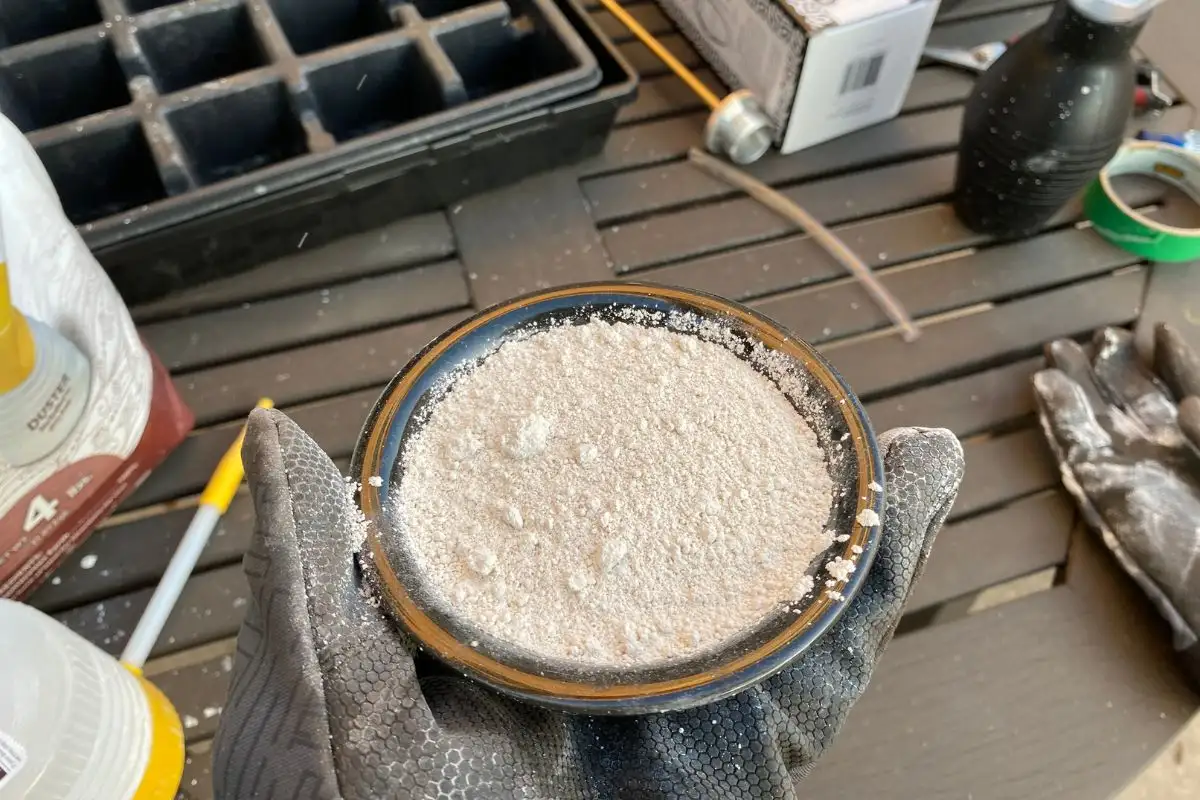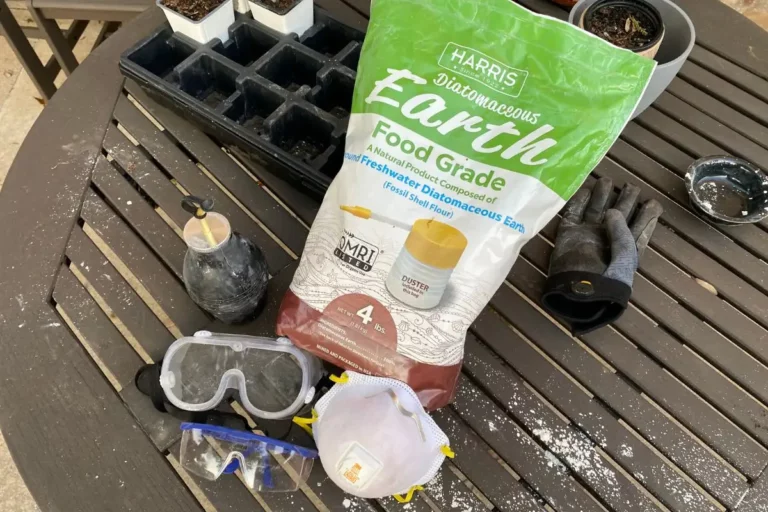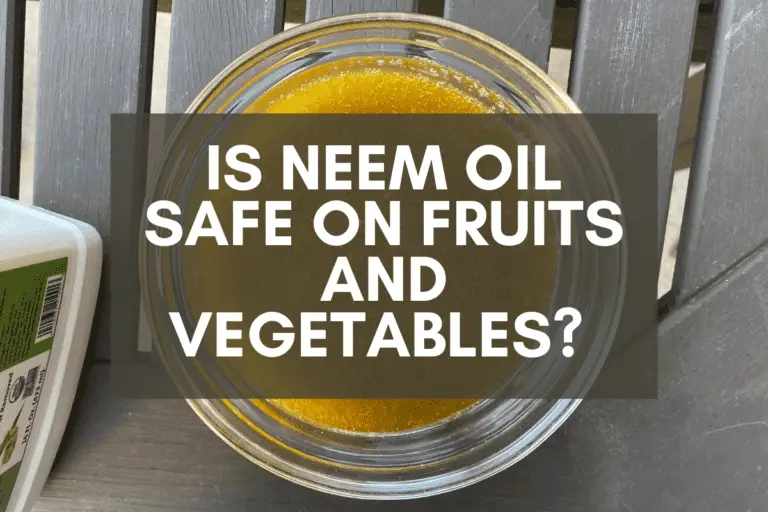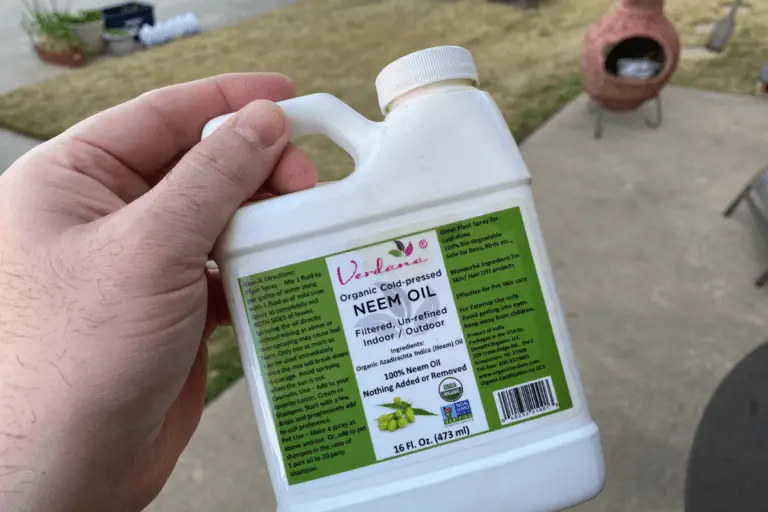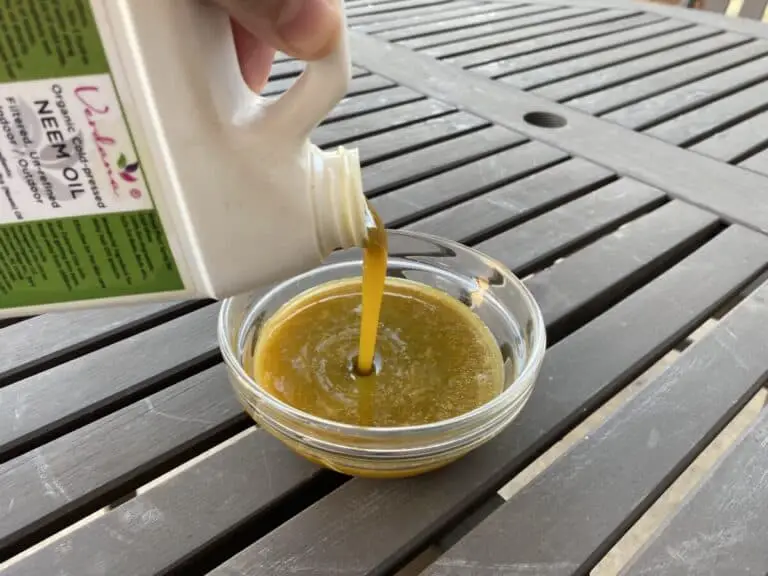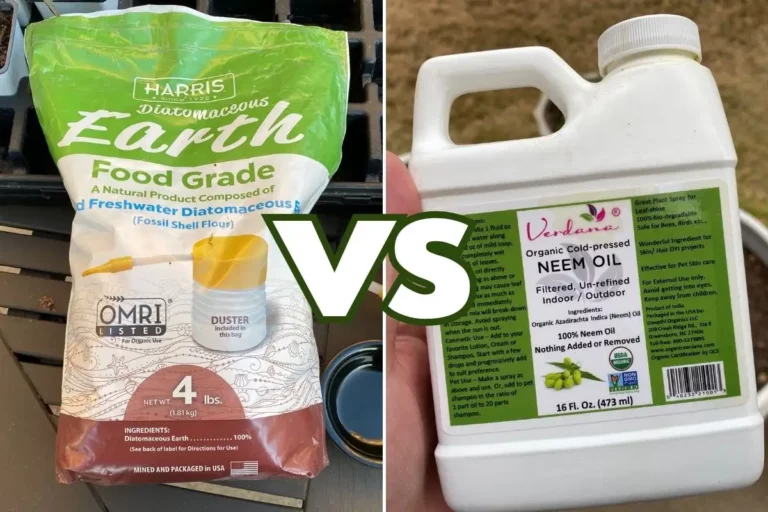Will Diatomaceous Earth Expire or Lose Its Effectiveness?
Diatomaceous earth (DE) is a non-toxic, relatively easy-to-use product that’ll be a game changer in your fight against garden pests.
But looking at that bag of DE in your garage or shed, you might be wondering, “Will diatomaceous earth ever expire or go bad?”
Diatomaceous earth, a natural insecticide derived from fossilized diatoms, does not expire nor lose its effectiveness. Its potency remains constant, provided it’s stored appropriately and kept dry, ensuring its lasting ability to control pests.
Understanding why DE remains potent long after you purchase it—and why it’s so good at killing so many different bugs—is helpful when it comes to saving your hard-earned money and making sure that pests don’t destroy your plants.
In this article, I’ll do a quick but dive deep into this topic, covering these important topics:
- why DE doesn’t go bad and reasons why it has such a long shelf life.
- recommendations on when to reapply DE for optimal results in your garden.
- a brief overview of those insects that DE effectively harms or kills off.
If you’ve never used DE before, you’ll want to get your hands on a few essential items if you don’t already own them. Here’s what I use in my garden:
If you’d like to learn more about what kind of DE to buy, how to store it, when to use it on your plants, and how to do so effectively, keep reading!
Does Diatomaceous Earth Go Bad or Lose Its Potency?

To understand why diatomaceous earth won’t go bad or lost its potency, let’s take a quick look at the microscopic organisms that have given us DE.
Eons ago, tiny, aquatic microalgae called diatoms could be found across the globe, especially in oceans, lakes, rivers, streams, and soil. Unlike other organisms on the planet, diatoms have siliceous cellular structures, which means they’re largely silica-based.
Over countless years, the fossilized remains of these diatoms accumulated anywhere watery sediment can be found, leading to vast silica deposits all over the world.
Fast forward to the present, and we’re extracting these ancient silica deposits and grinding them into a fine powder—what we now know as diatomaceous earth.
And here’s what makes DE such a pest management marvel: the siliceous powder.
To us mammals—and our avian and reptilian friends—DE looks powdery, almost like the flour you can buy at grocery stores. But if you look at DE under a microscope, you’ll see something very different.
When magnified, you’ll notice that DE particles are extremely jagged and sharp. They’ll catch hold of any insects that come into contact with them and pierce the bugs’ exoskeletons, causing them to dehydrate and die.
What’s so incredible about DE is its long-lasting shelf life. Assuming you store it well and keep it dry, it’ll literally never go bad.
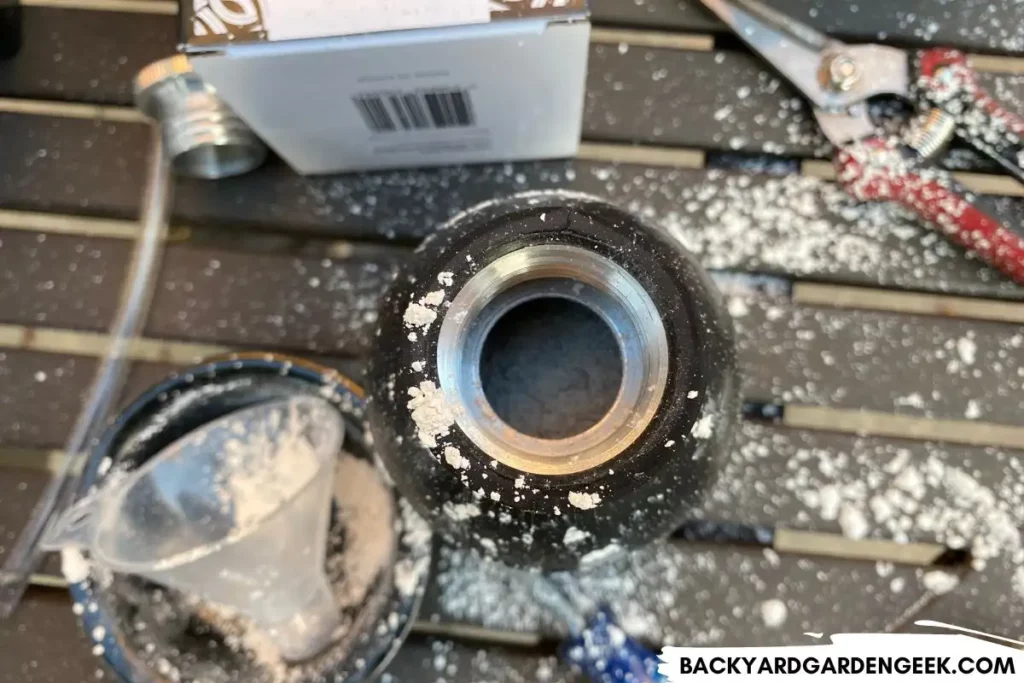
Since DE is a naturally occurring mineral, it won’t decompose or degrade over time. Moreover, its insect-killing property isn’t based on a chemical reaction that might diminish or change over time. As long as those sharp edges are intact, DE will continue to guard against unwanted pests.
In other words, if you store it properly, that bag of DE will outlast you!
Moisture is the only significant problem here because it can cause the DE to clump up, making it less effective until it dries out completely. However, even if it gets wet, DE will regain its potency after it dries (assuming there wasn’t any runoff during that time).
Imagine buying a pest control product once and never needing to replace it. That’s the power of DE.
This not only makes it an economical choice but also a sustainable one. With a bag of DE in your home, you’ve got a long-lasting, ever-potent pest management product on hand whenever you need it.
Just keep it dry, and it’ll stay sharp and ready to defend your garden against unwanted bugs.
If you’d like to learn more about the best ways to apply DE and spread it around infested areas in your garden—including lots of in-depth info about food-grade DE, the very best bulb dusters, and helpful protective gear—check out these articles:
- 9 Ways to Spread Diatomaceous Earth in Your Garden
- 57 Bugs That Diatomaceous Earth Kills or Keeps Away
- Best Way to Apply Diatomaceous Earth to Plants: 11 Pro Tips
4 Reasons Why Diatomaceous Earth Won’t Go Bad or Expire
When it comes to usefulness, practicality, and shelf life, diatomaceous earth can’t be beaten.
I love soapy water sprays, and I’m a big fan of using neem oil when it’s called for, but those products can’t compare in terms of longevity and potency. Unlike DE, you’ll have to buy new bottles of soap and neem oil on a somewhat regular basis.
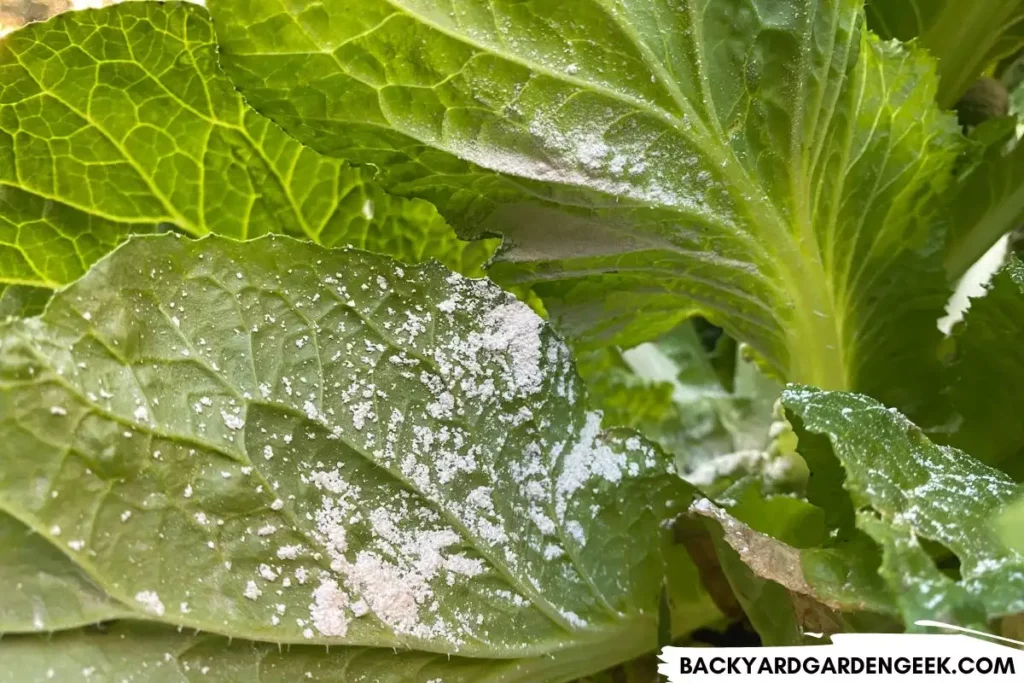
Not so with diatomaceous earth! Let’s delve into the reasons why DE retains its effectiveness no matter how long you store it:
- Naturally Occurring Material: First and foremost, DE is not a synthetic product that will break down over time. It’s a naturally occurring, mineral-based substance, formed from the fossilized remains of diatoms. These minute, aquatic organisms have been around for hundreds of millions of years, which should give you some perspective on DE’s durability.
- Physical, Not Chemical Action: DE’s insect-killing mechanism is not based on a chemical reaction, which could potentially lose its effectiveness. It’s all about physical activity. The sharp edges of DE particles pierce the exoskeleton of bugs, causing them to dehydrate and die. This process doesn’t diminish or change with time.
- Stable Compound: Diatomaceous earth primarily consists of silica, a chemically inert and stable compound. This means it doesn’t react readily with other substances and is resistant to chemical weathering and heat.
- Dry Storage: While diatomaceous earth doesn’t go bad, its effectiveness can be compromised if it becomes damp or wet. When wet, DE particles clump together, losing their ability to cling to bugs. But don’t worry. Even if it gets wet, DE can regain some of its insect-killing power once it dries out completely, although you’ll likely need to reapply it if that happens.
As you can tell by now, a single purchase of DE can last for years, or even decades, provided it’s stored correctly—kept dry and away from excessive moisture.
When you add a bag of diatomaceous earth to your gardening toolkit, you’re investing in a time-tested, long-lasting solution that’ll help you out when bugs inevitably come for your plants.
When Should I Reapply Diatomaceous Earth?
While diatomaceous earth remains indefinitely potent, the elements and environmental conditions often dictate when it’s time for a fresh application.
That raises the question: How often should you reapply diatomaceous earth?
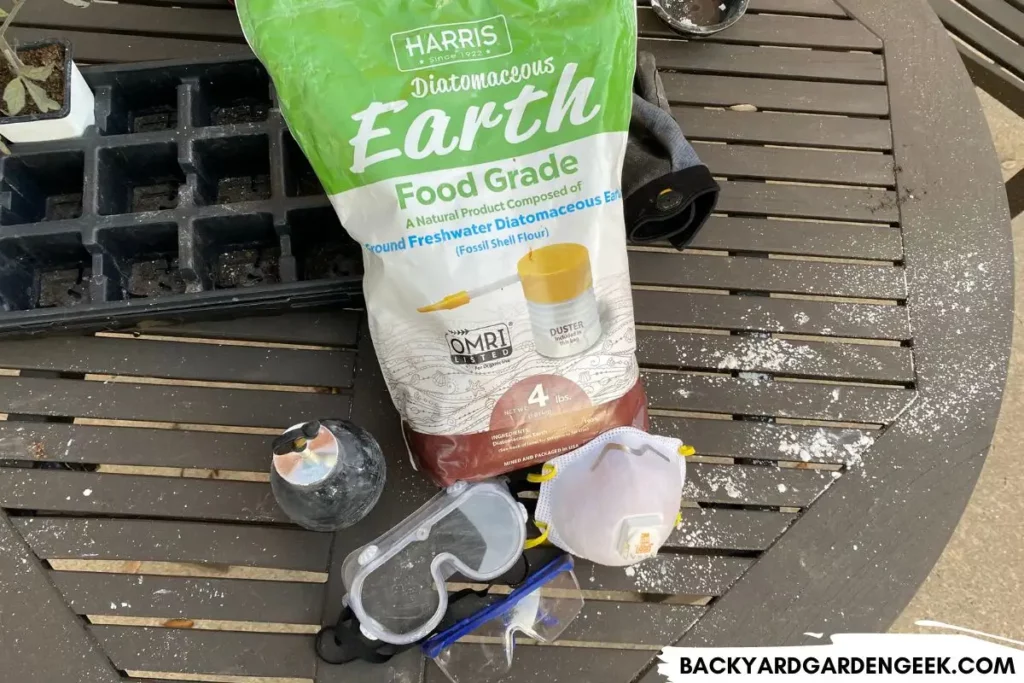
Here’s what I do to get the best results:
- After Rainfall: DE is a dry powder that doesn’t function well when wet. Rain, or even heavy dew, can dampen DE and render it less effective. As water causes DE particles to clump together, it no longer clings to bugs as readily. If it has rained or your DE has gotten wet, you’ll want to let it dry out and then reapply for optimal effectiveness. Just be sure to wear protective gear like masks and gloves when you do.
- After Watering Your Garden: Similar to rainfall, if you’ve watered your garden or plants and dampened the DE, it’s time for reapplication. Timing your DE application after watering can be a smart move to maintain its maximum efficiency. Just make sure everything’s completely dry before you spread DE in your garden.
- After a Week of Exposure to the Elements: DE can be affected by wind, sun, and other environmental factors. Over time, these elements may disperse DE or reduce its effectiveness by making it less accessible to bugs. I recommend reapplying DE about once a week if the pests continue to linger.
- Persistent or Increasing Infestations: If the bug problem isn’t improving or is getting worse, don’t hesitate to reapply DE and use other control methods like soapy water and neem oil as well. Pest populations can sometimes take a while to control, especially if they’re well-established or if the bugs are reproducing quickly as aphids and spider mites do.
- Seasonal Applications: If you’ve used DE to prevent a specific seasonal pest–whether that’s aphids, armyworms, cucumber beetles, spider mites, or some other garden nuisance–you’ll want to reapply the DE at at the start of each bug season. For example, if you had a problem with aphids or beetles in the spring, reapply DE as temperatures warm up and as you notice signs of pest activity around your plants. I don’t often apply DE proactively, but for some bugs (like squash vine borers), I cover the base of my squash plants with DE on a weekly basis to try to ward them off as long as I can.
Please remember that DE isn’t a once-and-done solution. It’s part of an ongoing strategy to control pests and prevent infestations from taking hold in your garden.
By being proactive and attentive to the conditions in your garden–and making sure you know what happens to your plants once bugs arrive and start feeding on them–you’ll be able to use DE as effectively as possible.
One more thing: DE is a non-selective product, which means it’ll kill off good bugs like non-stinging ants (at least when aphids aren’t around), bees and butterflies, ladybugs, lacewing, and even pill bugs.
As far as I can tell, it won’t kill off earthworms—in case you’re interested in mixing DE with your soil as an amendment—but you’ll want to be careful whenever you apply it so that you don’t unwittingly spread it on both helpful bugs and destructive pests.
Want to Know More About DE?
If you’d like to know more about using diatomaceous earth in your garden, take a look at these related articles:
